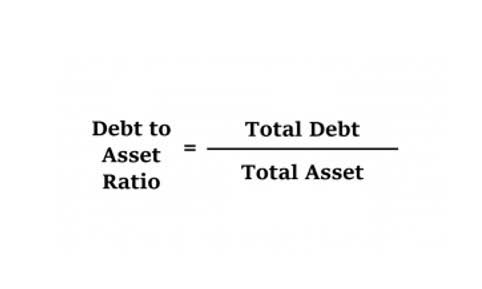Hedge Inventory HI
To avoid this pitfall, those who hedge both inventories and final sales should realize that they should start with the sales and determine how much of the sales they want to hedge. Then, any amount of inventory that they choose to hedge should precipitate a one-for-one hedge reduction of the sales hedge in favor of the inventory hedge. Given the potential for a variance of acquisition prices, however, this hedge will necessarily provide approximate coverage, and that should how is sales tax calculated be understood at the outset. This type of exposure lends itself well to a partial hedge—particularly if one begins by determining the degree of coverage with a lack of precision (e.g., a decision to hedge, say, 40 percent to 50 percent of the expected exposure). Hedge accounting attempts to accurately reflect the performance of an investment by aligning the recognition of gains and losses on the derivatives with the underlying hedge transaction. The benefits of hedging in wealth management include risk mitigation, portfolio stabilization, and the potential for improved returns.
Contents
Do you already work with a financial advisor?
- The effectiveness of a derivative hedge is expressed in terms of its delta, sometimes called the hedge ratio.
- Currently, it’s March and the price of wheat is $6.00 per bushel, which means the miller will make a profit.
- This gives the investor the right to sell the stock at a predetermined price, thereby limiting their potential losses.
- Someone on our team will connect you with a financial professional in our network holding the correct designation and expertise.
- Despite the fact that auditors no longer frequently permit cost-based assessment of perpetual commodity inventory items, many businesses nevertheless adhere to the standard of only hedging volatile inventories.
If the investment you are hedging against makes money, you have also usually reduced your potential profit. However, if the investment loses money, and your hedge was successful, you will have reduced your loss. Although it may sound like the term “hedging” refers to something that is done by your gardening-obsessed neighbor, when it comes to investing hedging is a useful practice that every investor should be aware of. hedge inventory In the stock market, hedging is a way to get portfolio protection—and protection is often just as important as portfolio appreciation.
PRODUCTS
Derivatives, such as options, futures, and swaps, can be used to manage specific risks within the portfolio effectively. Portfolio hedging aims to mitigate the overall risk of an investment portfolio using various strategies and financial instruments. Insurance products can be used to hedge against certain risks in wealth management, providing financial protection and stability.
To Ensure One Vote Per Person, Please Include the Following Info
Even though auditors now don’t generally allow cost-based valuation of permanent commodity inventory components, many companies still follow this principle of only hedging fluctuating, but not basic stocks. A regular battle with auditors is a consistent by-product of inventory hedging. A buying hedge may also be used to hedge against a short position that has already been taken by the investor. The objective is to offset the investor’s loss in the cash market with a profit in the futures market.
- This practice is commonly used in industries where the cost of raw materials or finished goods is subject to volatility.
- The commodity-feedstock procurement function should therefore work closely with the sales and marketing group, with S&OP mediating to ensure purchases and sales are in line with production and storage capacities.
- The benefits of hedging in wealth management include risk mitigation, portfolio stabilization, and the potential for improved returns.
- Organizations must also actively manage inventory price risks and avoid making bets on the commodities market.
- Now, due to quality non-adherence discovered in a particular sample during the factory audit, the producer is compelled to temporarily halt production.
- Even though companies don’t often think of their inventory as a source of market price risk, the prices of end products and feedstocks can fluctuate before companies sell or process the inventory.
For example, if an investor owns a stock that they believe may decline in value, they may hedge their position by purchasing a put option. This gives the investor the right to sell the stock at a predetermined price, thereby limiting their potential losses. The specific hedging strategy, as well as the pricing of hedging instruments, depends largely upon the downside risk of the underlying security against which the investor wants to hedge. A commercial hedger is a company or producer of some product that uses derivatives markets to hedge their market exposure to either the items they produce or the inputs needed for those items. Similarly, a corn farmer may sell corn futures instead to hedge against the market price falling before harvest.
Hedging Costs
If we were to focus on the problem of hedging inventory price risk, we’d have to start with a determination of the size of the exposure we’d want to hedge. We add law firm chart of accounts to that volume with inventory purchases during the period, and we reduce that volume with sales during the period, thus leaving us with an ending volume. The earnings impact that is realized, however, will depend on whether that ending inventory balance comprises inventory from the start (reflecting the starting inventory value) or inventory acquired during the period, and if the latter, at what price. Put it simply, you could see that hedges must be resolved and reopened at various market prices, and you can create different timings of cash flows as well as accounting treatment than tangible goods. Physical products are converted into revenue through the valuation of inventory and the cost of goods sold.
Ensure sales and operations planning’s participation in hedging decisions
In other words, the hedge is 100% inversely correlated to the vulnerable asset. This is more an ideal than a reality and even the hypothetical perfect hedge is not without cost. Investors and money managers use hedging practices to reduce and control their exposure to risks.
Clear hedging policy and consistent hedge accounting procedures supported by a control system with accurate focused reports are mandatory for successfully hedging inventory, together with expert guidance and risk modeling. We have guided many metal inventory hedgers through this maze and we encourage you to contact us with your questions. The outcomes of these respective hedges would be different, of course, as each serves to achieve a different hedge objective. Futures or forwards lock in prices; put options offer downside price protection; and collars constrain the effective price or value to be within a best- case/worst-case range. When hedge accounting is not used, changes in the fair values of derivative instruments are recognized in earnings in each reporting period and do not reflect the period in which the risks are hedged. While hedging can provide several benefits, including risk mitigation, portfolio stabilization, and potential for improved returns, it also comes with risks such as hedging costs, ineffective hedges, and regulatory and tax implications.
Bookkeeping -




